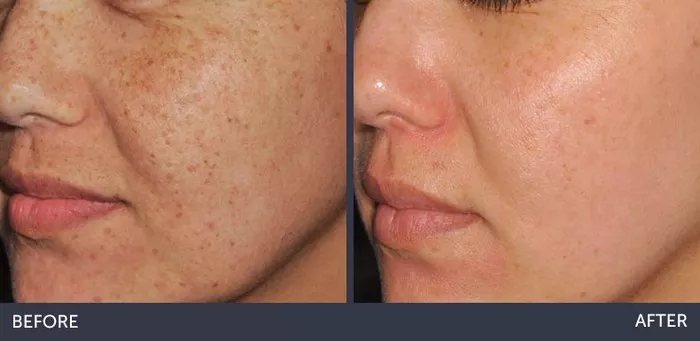Microdermabrasion is a popular cosmetic procedure that involves using a specialized device to exfoliate and remove dead skin cells from the face. While the procedure is relatively quick and non-invasive, many people wonder how long a microdermabrasion treatment actually takes. In this article, we will explore the ins and outs of microdermabrasion, including how long the procedure typically takes, what to expect during the treatment, and the benefits and risks associated with this popular skincare treatment.
What is Microdermabrasion?
Microdermabrasion is a cosmetic procedure that involves using a specialized device to exfoliate and remove dead skin cells from the face. The device typically uses either tiny crystals or a diamond-tipped wand to gently abrade the surface of the skin, removing dead skin cells and promoting cell turnover. The procedure is typically performed by a licensed aesthetician or dermatologist.
Microdermabrasion can be used to treat a variety of skin concerns, including fine lines and wrinkles, acne scars, hyperpigmentation, and uneven skin tone and texture. The procedure is non-invasive and does not require any downtime, making it a popular choice for those who want to improve the appearance of their skin without undergoing a more invasive procedure.
How Long Does a Microdermabrasion Treatment Take?
The length of a microdermabrasion treatment can vary depending on a number of factors, including the area being treated, the severity of the skin concern, and the experience of the aesthetician or dermatologist performing the procedure. In general, however, a microdermabrasion treatment typically takes between 30 and 60 minutes to complete.
During the treatment, the aesthetician or dermatologist will first cleanse the skin to remove any makeup, oil, or dirt. They will then use the microdermabrasion device to gently abrade the surface of the skin, paying special attention to any areas of concern. After the treatment, the skin may be slightly red and sensitive, but this typically subsides within a few hours.
What to Expect During a Microdermabrasion Treatment
Before undergoing a microdermabrasion treatment, it is important to understand what to expect during the procedure. Here are some things to keep in mind:
Cleansing: The aesthetician or dermatologist will first cleanse the skin to remove any makeup, oil, or dirt.
Microdermabrasion: The aesthetician or dermatologist will use the microdermabrasion device to gently abrade the surface of the skin, removing dead skin cells and promoting cell turnover.
Post-Treatment Care: After the treatment, the aesthetician or dermatologist will provide instructions on how to care for the skin, including avoiding sun exposure and using gentle skincare products.
Results: While the results of a microdermabrasion treatment are not immediate, they can be seen over time as the skin begins to regenerate and renew.
It is important to choose a licensed aesthetician or dermatologist who is experienced in the procedure to ensure the best possible results. They can also provide guidance on how to prepare for the procedure and what to expect during and after the treatment.
Benefits of Microdermabrasion
Microdermabrasion has several benefits for the skin, including:
Exfoliation: Microdermabrasion removes dead skin cells and promotes cell turnover, resulting in smoother, brighter skin.
Anti-Aging: Microdermabrasion can help reduce the appearance of fine lines and wrinkles, as well as improve skin tone and texture.
Acne Scar Reduction: Microdermabrasion can help reduce the appearance of acne scars and hyperpigmentation.
Product Penetration: After microdermabrasion, skincare products can penetrate the skin more deeply and effectively.
Safe for All Skin Types: Microdermabrasion is safe for all skin types, including sensitive skin.
Non-Invasive: Microdermabrasion is a non-invasive procedure that does not require any downtime.
Microdermabrasion can be a great option for those who want to improve the appearance of their skin without undergoing a more invasive procedure. The procedure is safe for all skin types and can provide a range of benefits, from exfoliation to anti-aging.
Risks of Microdermabrasion
While microdermabrasion is generally considered safe, there are some risks associated with the procedure. These include:
Irritation: Microdermabrasion can cause redness, irritation, and sensitivity, especially if the skin is sensitive or the procedure is performed incorrectly.
Infection: If the microdermabrasion device is not properly sterilized, there is a risk of infection.
Scarring: While rare, microdermabrasion can result in scarring if performed incorrectly.
Sun Sensitivity: After microdermabrasion, the skin may be more sensitive to the sun, so it is important to wear sunscreen and avoid prolonged sun exposure.
It is important to choose a licensed aesthetician or dermatologist who is experienced in the procedure to minimize the risks associated with microdermabrasion. It is also important to follow all aftercare instructions provided by the aesthetician or dermatologist to ensure the best possible results.
Conclusion
Microdermabrasion is a popular skincare treatment that involves using a specialized device to exfoliate and remove dead skin cells from the face. While the length of a microdermabrasion treatment can vary depending on a number of factors, including the area being treated and the severity of the skin concern, the procedure typically takes between 30 and 60 minutes to complete. While the procedure is generally safe, there are some risks associated with it, including irritation, infection, and sun sensitivity. If you are considering microdermabrasion, it is important to choose a licensed aesthetician or dermatologist who is experienced in the procedure. With the right care and attention, microdermabrasion can be a safe and effective way to improve the appearance of your skin.


